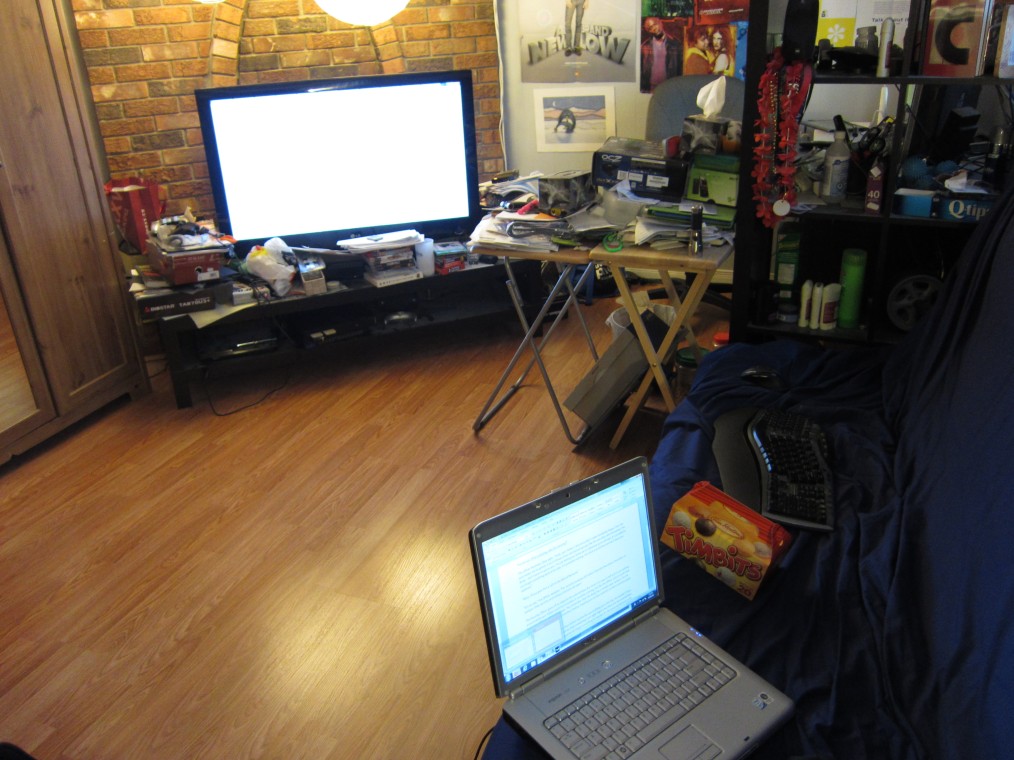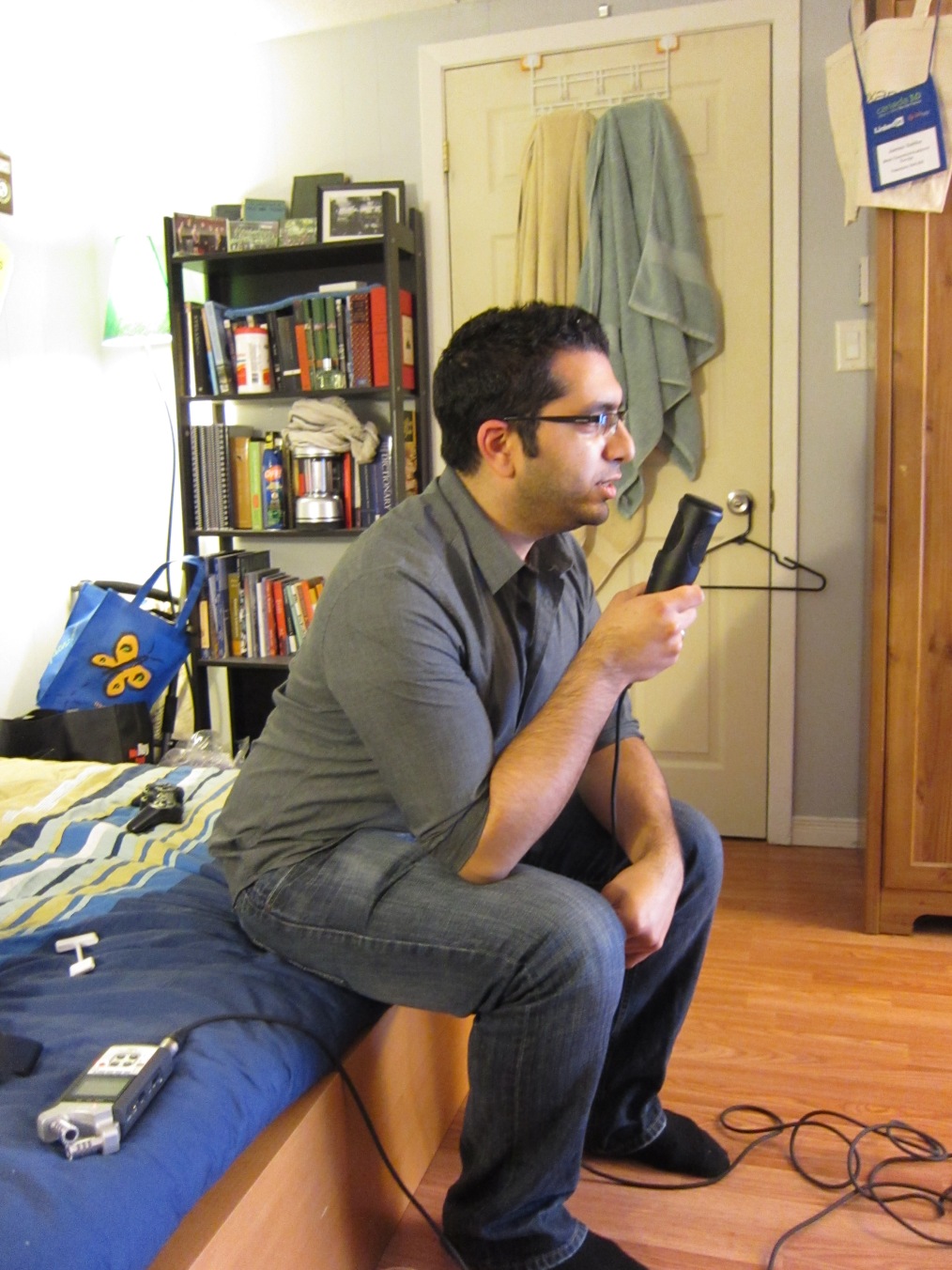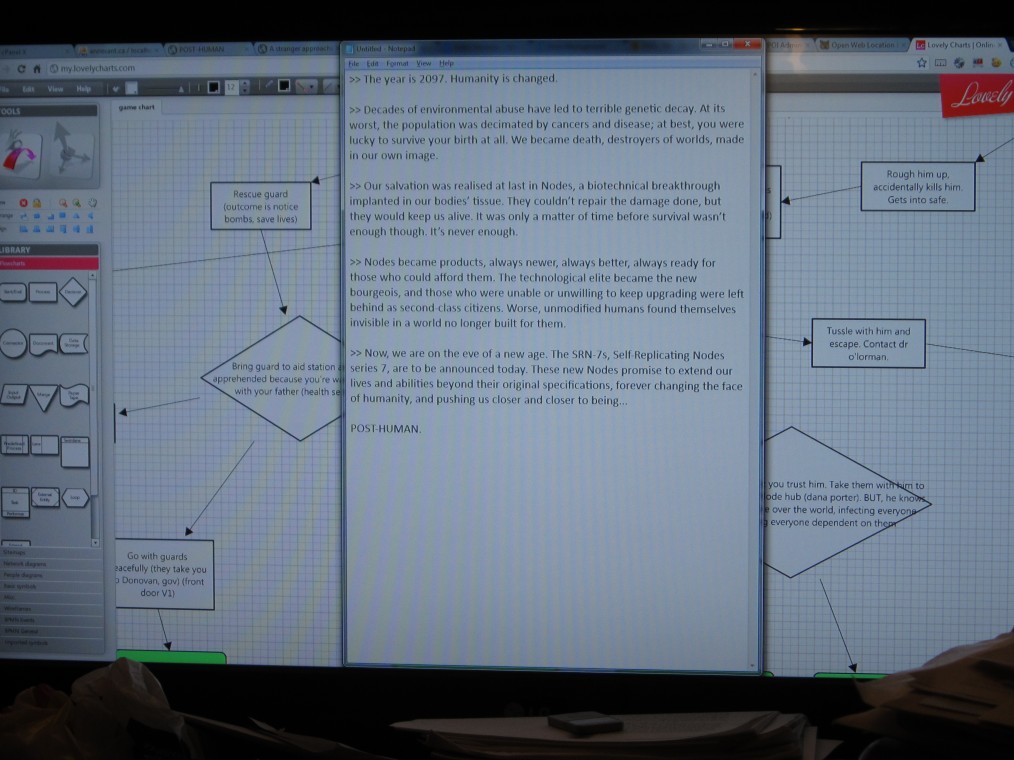So, I’m one of those crazies that routinely refuses downtime. (Typically to my detriment)
Last summer, after finishing my game for the Cabs of Curiosity, I went on vacation to Florida, where I sat in a kitchen and wrote an essay. During my research for that paper, I came across a book that had recently come out by David Wills (whose essay in The Prosthetic Impulse gives an astonishingly lucid rundown of Stiegler’s work.) The book was called Dorsality: Thinking Back through Technology and Politics. Admittedly, much of its nuance was wasted on me, he does some fascinating work in situating embodiment as a fundamental prerequisite for technology, doing much to refute the idea that our technological breakthroughs proliferate in spite of or at least separately from our physical bodies. This is not particularly new ground for us, given our readings of Stiegler for this course. However, Wills is perhaps a little more concerned with lucidity, which is somewhat needed if one must write a paper to a deadline and contend with work and family life.
At any rate, I typed up this mouthful in preparation for the final paper. The beat-to-beat structure of his argument is, admittedly, something I’m a little shaky on once I get further into the text, so it’s entirely possible this won’t show up in my paper, but it’s something that I’d like to share with the class (presuming that at least a few classmates are probably looking to do some last-minute blogwork while procrastinating on our final paper.)
“There seems little doubt that a fundamental realignment of the human in its relation to technology occurs with the upright stance. The anthropoid ‘chooses’ to give itself the prospect of tools and at the same time turns its back in a radical way on whatever is behind it. We know how it abandons the animal, refines the senses by downgrading smell and hearing, and reconfigures the knowable other within a frontal visual perspective, prioritizing a certain version of the fore-seen or fore-seeable. What is produced by that anthropoid, the technologies of tool use on the one hand, and language on the other, is henceforth presumed to occur within that frontal visual perspective of the knowable. That occurs in spite of the emphasis given, in terms of those technologies, to the surprise of discovery and invention. Such discovery and invention are henceforth and consistently understood as being ahead, around the corner, or on the horizon of a forward progression. What is therefore being forgotten, I argue – perhaps until it is, or unless it be reawakened in the fear of some bioengineered monstrosity, some retroviral haunting – is the extent to which technology is, to begin with, literally in the back. It is in the human back as the spinal – or can we already say dorsal? – turn or adjustment, the primary or primal vertebral articulation that frees the hands to pick up stones and fashion tools, that redistributes the weight of the head and jaw to allow the brain to develop and the tongue to speak. From and in its beginning, back where it began, the human is therefore receiving a definition from a technologization of the body, in a becoming-prosthesis or a becoming-dorsal.” (8-9)
As for our project, this interfaces with some of what Hayles says about the past-tense “became” in How We Became Posthuman:
“‘human’ and ‘posthuman’ coexist in shifting configurations that vary with historically specific contexts. Given these complexities, the past tense in the title – ‘became’ – is intended both to offer the reader the pleasurable shock of a double-take and to reference ironically apocalyptic visions such as Moravec’s prediction of a ‘postbiological’ future for the human race.” (6)
The idea of agency in the face of these sweeping technological changes is one I personally keep coming back to. I really enjoy that Hayles roots the response in that of a “double-take” or the sudden doubling-back of the head. It’s the kind of blithe metaphor that would make Wills smile and smile and smile.
The idea that we’re “looking back” upon technological changes that have already occurred is also important to keep in mind for our project. In some of his early Necromedia essays, Dr. O’Gorman seemed to express some reluctance towards science fiction as a vehicle to address technoculture:
From “What is Necromedia?”
“Unlike techno-science thrillers and science-fiction movies that draw a very distinct line between technology and mortality, American Beauty does so in a much more subtle, naive way.” (157)
And American Beauty Busted:
While the film American Beauty is not about technology per se (and this is what makes it instructive), it seems clear that each of the main characters meets his or her demise at the hands of communications technology. (36)
I’ve not been able to locate a fully-elucidated dismissal of science fiction, but would be interested to hear some of Dr. O’Gorman’s rationale. One could make the tenuous arugment that, by situating these debates within a broad science fiction framework, we somehow infantilize the issues that are at stake by dint of the perceived sense of adolescent futurism that golden age sci-fi carried.
Furthermore, it’s reasonable to allow that science fiction at least tangentially engages in a dialectic with our conception of “human” — insofar as any sort of art or literature does. To steal from Blanchot again, “Through representation we reintroduce into our intimacy with ourselves the constraints of the face-to-face encounter; we confront ourselves, even when we look despairingly outside of ourselves.” (The Space of Literature, 134)
As Hayles admits, the changes between human and posthuman were “never complete transformations or sharp breaks; without exception, they reinscribed traditional ideas and assumptions even as they articulated something new.” (6) – if we take this sort of messy, dialogic view of science fiction, it occupies a similar space. Consider, for example, Ursula K. Le Guin’s The Left Hand of Darkness as a sort of ur-example of this process; wherein she posits a world in which gender is considered a fluid thing, but still problematized the narrative with a distinctively phallocentric bias. Would that I had the time and space to go on about that novel, however, because there is, as always, so much more to that text than I am able to address. At any rate, it’s reasonable to consider that a vast majority of the science fiction genre uses technology as a novum, or point of difference, and in doing so, fetishizes the narrative of human progress that reinforces contemporary technoculture.
However, if we acknowledge that there is at least a reasonable dialogue between literature and humanity, the conception of science fiction, as a literary genre, must necessarily be given to that same messy dialogue. Consider this passage from Adam Roberts’ Science Fiction: A New Critical Idiom:
The symbolic purchase of SF on contemporary living is so powerful, and speaks so directly to the realities of our accelerated culture, that it provides many of the conceptual templates of the modern Western world. The complex debates surrounding the genetic engineering of foodstuffs, for instance, enter popular consciousness in SF terms as ‘Frankenstein foods’. The dangers of asteroid impact on our world
find expression in such SF texts as the films Deep Impact (1997) and Armageddo (1998). Our feelings about computers have been rehearsed by every SF text that includes artificial intelligence; actual exploration of our solar system seems tame to us because our expectations have been raised by the thrills of SF imagery; many people regard the trope of UFO abductions to be fact rather than science fiction, partly because of the expertness of SF texts such as The X-Files. As Istvan Csicsery-Ronay Jr puts it, ‘SF has ceased to be a genre per se, becoming instead a mode of awareness about the world’ (Csicsery-Ronay 1991: 308). SF does not project us into the future; it relates to us stories about our present, and more importantly about the past that has led to this present. (36)
Does Necromedia not attempt to engender a similar ‘awareness about the world’? Is any digital humanities not also engaged in this strange looking back to look forward. As a basic tenet of its composition, science fiction is already engaged in the dorsal turn, as David Wills has it, insofar as it looks behind to inform what is to come. It is a messy process, nowhere near the clean binaries of the digital age. There is something bio to this pervasive but unreliably-drawn logic. It is from this place that we have constructed Post-Human, informed as we are by Kenneth Burke, who suggested this wonderful mouthful of his own approach to motivation,
A perfectionist might seek to evolve terms free of ambiguity and inconsistency (as with the terministic ideals of symbolic logic and logical positivism) […] what we want is not terms that avoid ambiguity, but terms that clearly reveal the strategic spots at which ambiguities necessarily arise. (xviii)
It is our intent to, rather than shuffle them under the rug, directly confront the strategic spots at which technoculture and the digital humanities necessarily counterimplicate one another. To, as Sarah noted in an earlier comment, write from a place of discomfort. To critique technoculture while instantiating the current signifiers of its end-logic (3G-enabled iPads, genetic manipulation, planned obsolescence, etc.) To provoke the debates in which we are called hypocrites because, to my mind, those are the only debates in which the academy might be able to salvage its honesty.










